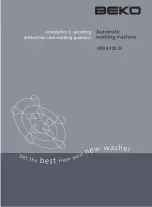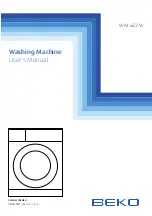
12
r
Raise the needle and presser foot.
s
Leaving about 10 cm (approx. 4 inches) of
thread at the ends, use scissors to cut the
threads.
a
10 cm (approx. 4 inches)
■
Finishing the thread ends
a
At the end of the stitching, use a hand sewing
needle to bring the bobbin thread up to the
wrong side of the fabric.
a
Wrong side of fabric
b
Bobbin thread
b
Working from the wrong side of the fabric, tie
the bobbin and upper threads together by
hand. Cut away excess threads with scissors.
a
Wrong side of fabric
b
Right side of fabric
c
If the desired results could not be achieved,
adjust the tension of the bobbin thread and of
the upper thread, and then try sewing the
stitching again.
For more details, refer to “ADJUSTING THE
THREAD TENSION” on page 17.
Bobbin Work Free Motion Sewing
■
For bobbin work free motion sewing use the
instructions for “CREATING BOBBIN
WORK (SEWING)” on page 10.
■
For information about using the free motion
quilting foot “C”, free motion open toe
quilting foot “O”, or free motion echo
quilting foot “E” refer to “Free-Motion
Quilting” located in the machine’s
Instruction and Reference Guide.
■
If so desired, use a template or draw your
design on the stabilizer to allow for ease of
stitching. Remember, your stitches with your
decorative thread will be on the underneath
side of your fabric and the stabilizer will be
on the top of the wrong side of your fabric.
Note
• Do not press the “Thread Cutter” button to cut the
threads, otherwise the machine may be damaged.
Note
• If it is difficult to place bobbin thread through the eye
of a hand sewing needle, use a ribbon embroidery
needle to pull the thread up to the wrong side of the
fabric. Otherwise, use an awl to pull up the bobbin
thread.
Note
• To ensure threads do not come undone after being
tied place a drop of fabric glue on knots.














































